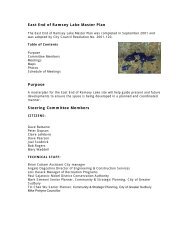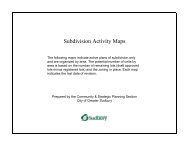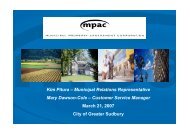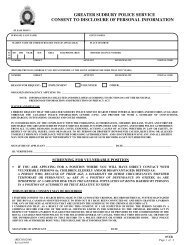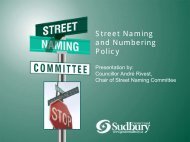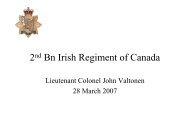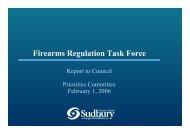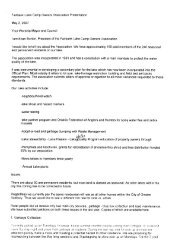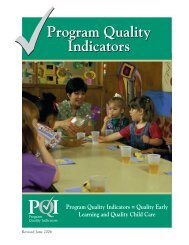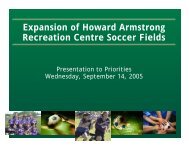City of Greater Sudbury Transportation Study Report
City of Greater Sudbury Transportation Study Report
City of Greater Sudbury Transportation Study Report
You also want an ePaper? Increase the reach of your titles
YUMPU automatically turns print PDFs into web optimized ePapers that Google loves.
The former <strong>City</strong> <strong>of</strong> <strong>Sudbury</strong> makes up more than half (about 55%) <strong>of</strong> <strong>Greater</strong> <strong>Sudbury</strong>’s<br />
population, and more than three quarters <strong>of</strong> its employment. As a result, the former <strong>City</strong> <strong>of</strong><br />
<strong>Sudbury</strong> has a higher than average labour participation rate, meaning that more people<br />
travel to the former <strong>City</strong> <strong>of</strong> <strong>Sudbury</strong> for work than those who travel outside. More people<br />
travel from Capreol, Nickel Centre, Rayside-Balfour and Valley East then those who travel to<br />
these communities for work.<br />
In the 1992 <strong>Transportation</strong> <strong>Study</strong>, the base population was 156,575 for the study area that is<br />
slightly higher than the current population. Comparing the 1992 and 2001 population figures<br />
for Capreol, Onaping Falls and the <strong>City</strong> <strong>of</strong> <strong>Sudbury</strong> reveals a decrease in population while<br />
the remaining municipalities have shown an increase with the highest percentage increase<br />
occurring in Valley East.<br />
Employment figures have increased from the previous estimate <strong>of</strong> 61,683 used in the 1992<br />
<strong>Transportation</strong> <strong>Study</strong> to 65,659 in 2001. While employment in Walden decreased by<br />
approximately 12%, employment in all other areas increased. Capreol had a 53% increase<br />
in employment (from 477 to 730), Rayside-Balfour had an increase <strong>of</strong> 37% (2,047 to 2,800)<br />
and employment in Valley East has increased by 38% (2,951 to 4,080).<br />
2.2. Road Network<br />
<strong>Greater</strong> <strong>Sudbury</strong> is well serviced by a network <strong>of</strong> provincial highways, arterial roads, collector<br />
roads and local roads totalling approximately 1600 kilometres <strong>of</strong> roadway within the <strong>City</strong><br />
(excluding provincial highways). Figure 2.2.1 illustrates the public road network within<br />
<strong>Greater</strong> <strong>Sudbury</strong>. In addition to the public road network, there are an additional 335 known<br />
kilometres <strong>of</strong> private roads in <strong>Greater</strong> <strong>Sudbury</strong>.<br />
The four provincial highways that pass through <strong>Greater</strong> <strong>Sudbury</strong> and link the city with other<br />
regional centres are Highway 69, Highway 17, Highway 144 and Highway 537.<br />
Due to the high level <strong>of</strong> accessibility provided by the existing road network, trucking<br />
continues to be an efficient and cost-effective means <strong>of</strong> moving goods within <strong>Greater</strong><br />
<strong>Sudbury</strong>. Existing truck routes are illustrated on Figure 2.2.2.<br />
CITY OF GREATER SUDBURY<br />
OFFICIAL PLAN BACKGROUND REPORT<br />
September 2005 Page 12



